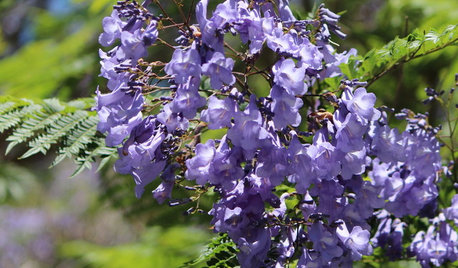Tomato Spotted Wilt Virus
rstorch
11 years ago
Related Stories

EDIBLE GARDENSSummer Crops: How to Grow Tomatoes
Plant tomato seedlings in spring for one of the best tastes of summer, fresh from your backyard
Full Story
LIFEKitchen Traditions: Tomato Season Meets a Family Legacy
Somewhere a Sicilian great-great-grandmother is smiling at a bowl of American-made sauce
Full Story
GARDENING GUIDESThe Secret Formula for Grouping Plants in a Pot
Designing a gorgeous container garden is easy once you know this simple rule of thumb for composition
Full Story
GARDENING GUIDESCalifornia Gardener's June Checklist
Update your hydrangeas, catch up on tomatoes and more ways to enjoy your California garden in June
Full Story
EDIBLE GARDENS8 Surefire Vegetables and Herbs for Beginning Gardeners
Learn the edible plants that are popular and easy to grow in a backyard or container garden
Full Story
EDIBLE GARDENSGarden BFFs? Why Your Vegetables Are Begging for Companion Plants
Foster friendships among plants for protection from pests, pollination support and color camaraderie
Full Story
CALIFORNIA GARDENINGCalifornia Gardener's July Checklist
Bite into tree-fresh apricots, inhale delightful garden perfumes and continue planting vegetables for a late-summer harvest
Full Story
GARDENING GUIDESEssential Watering Tips for Your Edible Garden
To give your edible plants just what they need, check out these guidelines for how, when and how much to water
Full Story
GARDENING GUIDES20 Favorite Flowers for Butterflies and Bouquets
Discover perennials and annuals that do double duty as butterfly magnets and versatile cut flowers
Full Story
EDIBLE GARDENSHow to Grow Your Own Sweet Summer Crops
This guide will help any gardener get started on growing the freshest warm-season veggies and berries for summer
Full Story





Okiedawn OK Zone 7
elkwc
Related Professionals
Willowick Landscape Architects & Landscape Designers · Cicero Landscape Contractors · Deer Park Landscape Contractors · East Haven Landscape Contractors · El Segundo Landscape Contractors · Gaithersburg Landscape Contractors · Roswell Landscape Contractors · San Carlos Park Landscape Contractors · Wethersfield Landscape Contractors · Hyattsville Decks, Patios & Outdoor Enclosures · Layton Decks, Patios & Outdoor Enclosures · Methuen Decks, Patios & Outdoor Enclosures · Myrtle Beach Decks, Patios & Outdoor Enclosures · Parlier Decks, Patios & Outdoor Enclosures · South Lyon Decks, Patios & Outdoor EnclosuresOkiedawn OK Zone 7
elkwc
rstorchOriginal Author
Okiedawn OK Zone 7
elkwc
rstorchOriginal Author
rstorchOriginal Author
rstorchOriginal Author
rstorchOriginal Author
Okiedawn OK Zone 7
rstorchOriginal Author
Okiedawn OK Zone 7
chickencoupe
rstorchOriginal Author
Okiedawn OK Zone 7
elkwc
rstorchOriginal Author
elkwc
rstorchOriginal Author